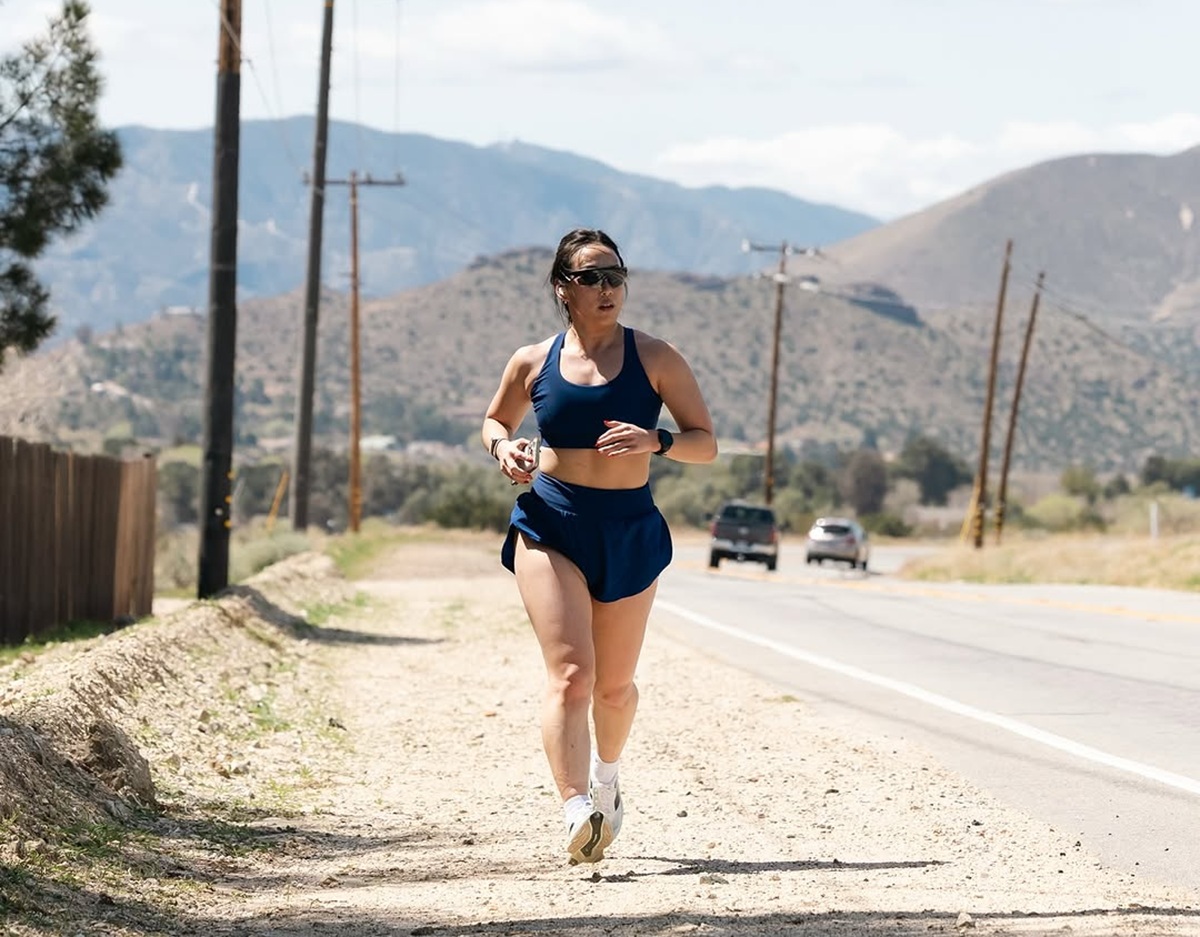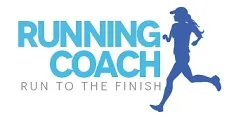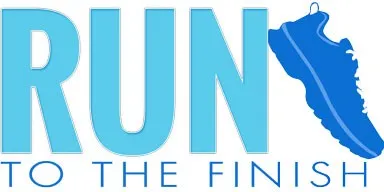Running asks a great deal of your body. There are times when every muscle aches and you wonder why you’ve subjected yourself to these workouts…but we know that it’s the endorphins, the pride, and the sweat.
Unfortunately, getting a headache after running can quickly make you forget all the good stuff.

It’s not too common to have an exercise-induced headache, but it absolutely can happen.
They are rarely dangerous, though if it’s happening to you constantly and turning into migraines, you should talk with your doctor.
This guide is dedicated to helping you understand the causes of a headache after running and the tips to avoid it in the future.
What Causes A Headache After Running?
While it could feel like your brain is simply telling you not to run, it’s really your body just asking for a little extra planning around your sweat session.
When we exercise, the blood flow to our brain increases to make sure that it has enough oxygen to keep us moving. The nerves and blood vessels around your brain start to expand to help move the oxygen around…and that’s usually when a headache may occur.
Let’s take a look at the different reasons why you may experience a headache after running and what you can do to prevent them.
8 Main Types and Reasons for Headache After Running
1. Physical Exertion
Anytime you are pushing your body beyond its current limits, the body is going to respond with different aches, and one you might find as a new runner is a headache.
The longer or harder you run, the higher your heart rate and the higher your oxygen consumption rate. Often, the body can’t meet the two needs, and the result is that the blood vessels around your brain become wider or more open (dilated) to help increase circulation.
This then results in the body sending out a pain signal, or in this case, a headache. The pain will vary from person to person, but this type of headache is often described as a throbbing pain on both sides of the head.
You may have heard this called primary exertional headaches or primary exercise headaches.
Symptoms of primary exertional headaches include:
- Pain sensation that can be described as throbbing
- Headache starts after a high intensity workout session (such as running)
- Pain can be felt on both sides of the head
On the other hand, symptoms of secondary exertional headaches include:
- Nausea
- Vomiting
- Double vision
- Neck stiffness
Secondary exertional headaches may be a symptom of an underlying condition (ranging from a simple cold or sinus infection to a tumor).
So, if your symptoms match those of this kind of headache, it’s highly recommended to inform your doctor and get a check-up done.
How to Prevent It
You can make a few small changes to your routine to help prevent getting headaches from exercising. Try incorporating a longer, slower warm-up like a 10 minute walk, scale back your effort, and slow your pace down or decrease the amount of time that you’re running.
But if these don’t work you could consult with your doctor about taking indomethacin before the workout to help prevent an exercise headache.
2. Dehydration
Did you know your brain is 80% water?
As you sweat and don’t drink enough, your brain literally shrinks inside your skull! HOLY WHAT?!
This happens because when you’re dehydrated, your body is losing more fluid than you’re consuming, which then decreases your blood volume. And so, the amount of blood that’s flowing through your brain decreases, and in turn, this also reduces the amount of oxygen delivered to your brain.
But that’s not all, as it shrinks, it pulls on all the nerves around the brain and further adds to all the factors that lead to that running headache. You’ll notice this type of headache definitely gets worse if you continue to exercise.
Some of the top symptoms of this type of headache include decreased urine output, heightened sense of thirst, fatigue, dry skin, and mouth, as well as constipation.
This can all lead to an electrolyte imbalance in your body, which is another contributing factor to headaches for runners and is most commonly caused by low sodium levels in the body.
Dehydration headaches take a bit to resolve, so make a plan to stay on top of your water needs.
How to Prevent It
As a general rule, if you’re planning on running or cross-training for more than 45 minutes to an hour, it’s important to not only consume electrolytes an hour beforehand but every 15 to 20 minutes during the workout as well.
Always remember that proper hydration is one of the keys to being able to run safely and efficiently. A sports drink or a electrolyte powder can do wonders in preventing headaches after running.
3. Running at Altitude
Running at high altitudes decreases the amount of oxygen getting to the muscles, and there’s an increased risk of dehydration, which can lead to post-run headaches.
In other words, oxygen levels at altitude decrease the farther you go up, making it harder to breathe. Altitude adaptation is what increases red cell volume and thus should increase our body’s ability to run faster.
Your body doing all of this work is part of what causes many people to feel less than fantastic when they first get to altitude…also known as altitude sickness, but for many it’s actually just dehydration!
- Headache
- Harder to breathe (harder and harder the higher you go)
- Runs feel harder (because you can’t breathe)
- Nausea
- Possible sleep disruptions
- Often a major decrease in appetite, which you need to overcome to fuel your runs
You need to drink more water than you’re used to drinking. It’s very easy to become dehydrated because you are breathing out more so you lose water through respiration and the air is very dry so your sweat dries quickly potentially not triggering your normal urge to drink.
How to Prevent It
If you’ve quickly moved to a high altitude location, then you can’t exactly prevent these. But what you can do is acclimate yourself slowly. Or if you’re traveling from sea level to say Denver, stay on top of your hydration and slow down on your runs to start.
4. Sun Exposure (Overheating)
Bright sunlight on its own can be a trigger for many people, which is yet another GREAT reason for running sunglasses or a wide-brimmed running hat. You can also consider wrapping a damp towel or bandana around your neck.
Additionally, when it’s bright, you begin to squint, and that is creating tension in your face and skull for the duration of your run.
But secondarily is overheating.
Running in the summer, the body is working very hard to keep you cool, but will hit a point where it can’t achieve that and you’re likely getting dehydrated.
The headache followed by feeling weak or dizzy is a sign that you need to stop running immediately and find some cool air.
How to Prevent It
Before you go running outside, grab a pair of running sunglasses or a hat with a wide brim to protect your eyes and face.
If it’s extremely hot outside, consider tying a moist bandana around your neck. A small spray bottle of cold water can also come in handy. Spray it on your face from time to time.
When the temperatures get dangerously hot, run inside on the treadmill or modify your schedule to run super early or at the end of the day when the sun isn’t as strong.
Checkout these additional tips for running in the heat.
5. Low Blood Sugar
We talk a TON in the nutrition course about the need for carbohydrates to fuel your run. If you’ve been resisting the pre-run meal or not fueling well as your runs get longer and longer, then suddenly getting a headache after running… we may have found the culprit.
Your brain runs on glucose, and your muscles need carbohydrates to continue performing.
When your levels get low, it’s called hypoglycemia, and one of the first symptoms is a headache.
Other symptoms of this type of headache caused by hypoglycemia include shaking, dizziness, sweating, blurry vision, disorientation, and even personality changes.
Insulin regulates blood sugar levels in your body, and low insulin levels can cause changes in catecholamines, which are hormones like dopamine, epinephrine (adrenaline), and norepinephrine.
These hormones are produced by the adrenal glands and have the ability to influence how the brain functions. In other words, less blood sugar means less fuel for the brain and can lead to post-run headaches.
How to Prevent It
Make sure to eat a meal or snack within two hours of working out. Aim for foods that contain protein, enough carbohydrates, and a little fat to help maintain a healthy blood sugar level. Right around workouts, you can ignore the advice to avoid processed, refined carbs and sugar because those are the quick fuels we need during a hard workout.
6. Poor Posture
Tension headaches can happen due to stress as we tend to tense up our shoulders, which leads to neck tension right on up to the scalp.
What does that immediately make you think of? How about all the times that your shoulders are pulled up to your ears while running or you finish with sore shoulders?
It’s very easy to fall into poor form as we fatigue, which can cause both tensions in your neck and shoulders, pulling on muscles that lead to head pain.
Foam rolling or regular massage can help ease the tension we hold in these parts of the body, but you should also make sure you are fully aware of the different factors that go into a good running form.
Additionally, I know that my posture gets worse the longer I’m on my phone or computer. So, these posture correction exercises can help with headaches!
How to Prevent It
Schedule some time to do some running in front of a mirror. You can also set your phone up so that it records you. Watching the replay, what’s happening? Are your shoulders rounded and forward? Or are they pulling upwards, getting close to your ears?
If you want a little extra guidance, check out my 30-Day Running Techniques program that’ll walk you through different drills you can do to improve your running form by spending only 10 minutes a week on them!
7. Tendency for Migraines
There’s another factor that many runners and people in general overlook, and that’s the tendency for migraines. If you’re naturally prone to migraines, you’re more likely to be affected by all the factors above.
Triggers for migraines differ from person to person, and maybe it runs in your family or you’ve just unfortunately suffered from them on and off for some time now.
If that sounds like you, then prevention is always better than cure. In the next section, we’ll discuss ways you can prevent a post-run headache.
How to Prevent It
If you have a tendency for migraines, you should speak to your doctor. He or she will check for any other underlying conditions that could be contributing to it and then be able to prescribe you with prescription medication that will reduce the migraines.

8. Allergies
I’ve actually talked a lot about how to run through allergy season, so I’m not fully diving in to that here. Just remember it’s not about only the run, it’s the particles you bring in with you afterwards in hair, shoes, etc.
How to Treat a Headache After Running
Our goal is to prevent a headache when working out by taking the potential causes above and looking at the solutions.
- Stop running to allow the blood vessels to relax and the headache should start to subside
- Take an anti-inflammatory over-the-counter medication such as naproxen to speed up relief and then apply these techniques to prevent future running headaches
- If OTC medications don’t work, your doctor may prescribe indomethacin. It’s a prescription medication that works well for many people but can cause stomach issues in some.
- Pay attention to effort levels, not pushing too far beyond your current fitness level. Always remember the 10-percent rule (10PR) which means that you should never increase your weekly mileage by more than 10 percent from one week to another
- Start runs properly hydrated and sip electrolytes from a sports drink throughout the run
- Maintain good blood sugar levels by learning how to fuel your runs
- While running think about standing tall (not hunching over) and relaxing your shoulders – check in a few times throughout the run. Proper alignment can be the difference between a smooth run and one which causes a throbbing headache.
As always let me repeat you should seek medical advice if you’re consistently having headaches and you know you’ve been hydrating well and fueling well.
The things that could trigger a headache from running are vast, but these are some of the most common.
Signs You Need to Visit a Doctor for Headaches After Running
If you’ve been experiencing headaches after running that are increasing in frequency, and have noticed symptoms of secondary exertional headaches, it’s time to head to the doctor for a check-up.
It could be something as benign as a simple cold, or something much more serious that requires medical attention.
And there you have it folks; these are the 8 main causes and reasons for headaches after running. Come back to this guide from time to time to make sure headaches are never part of your running journey!
Looking for more training tips?
- Prevent marathon training burnout
- How to train through summer running
- Best hydration packs for running
- Best Carbs for Runners
Other ways to connect with Amanda
Instagram Daily Fun: RunToTheFinish
Facebook Community Chatter: RunToTheFinish
Sign Up to Receive a Weekly Newsletter with Top Running Tips and Laughs



 SCARPA Spin Ultra 2 Review: Confident, Cushioned, and Trail-Tested for the Long Haul
SCARPA Spin Ultra 2 Review: Confident, Cushioned, and Trail-Tested for the Long Haul
Migraine sufferer here – this used to happen quite a bit. Occurs still, just less frequently because of Botox treatments. The headaches come hours later though Usually a morning run will cause a headache at about 2:00 in the afternoon. Very frustrating